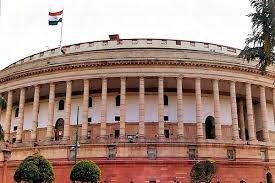The future of the former parliament building is in focus
The old parliament building attracts interest now that the legislative sessions have been moved to the new structure, raising questions about its future.
In February 1921, HRH Prince Arthur, Duke of Connaught and Strathearn, lay the cornerstone for this landmark building, which was designed by British architects Sir Edwin Lutyens and Sir Herbert Baker in 1912–1913 and finished in 1927. This building feat took five years to complete.
The building’s inauguration was scheduled for January 18, 1927, and Lord Irwin, the Indian Viceroy at the time, was invited by Sir Bhupendra Nath Mitra, a member of the Governor-General’s Executive Council in charge of the Department of Industries and Labor. This 96-year-old structure was the site of Jawaharlal Nehru’s famous “midnight hour” address and the adoption of the Indian Constitution.
The original structure, however, was no longer suitable for today’s requirements, especially in terms of MP offices and cutting-edge information technology capabilities. Five terrorists from the Pakistan-based terrorist groups Lashkar-e-Taiba (LeT) and Jaish-e-Mohammed (JeM) tried to enter the building in 2001, breaching its security.
More information about the former parliament building:
Government representatives have promised against demolishing the historic parliament building. As an alternative, it will be renovated to include more useful areas for legislative functions. The new parliament building will house the national archives. This change will help with restoration work that is attentive to the building’s character and provide it more room.
Hardeep Singh Puri, who was the Union’s housing and urban affairs minister at the time, delivered a speech in the Rajya Sabha in 2021. He said that they will make repairs and put the current building to new use. Even the idea of making it a national museum is being considered.
The Lok Sabha chamber in the new parliament building can accommodate 888 members. In the Rajya Sabha chamber, it has 300 seats. During combined sessions of both chambers, it can accommodate 1,280 MPs. The ancient parliament building’s historical importance endures even as it enters a new chapter. And it seems like its future contributions to preserving India’s rich history and culture will be just as crucial.







